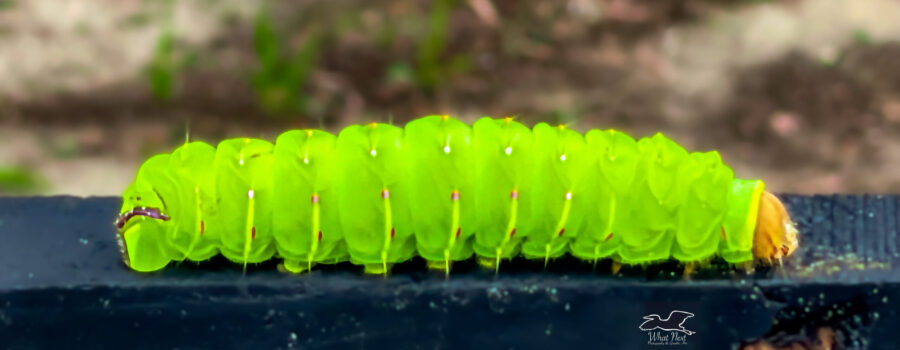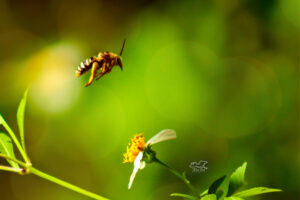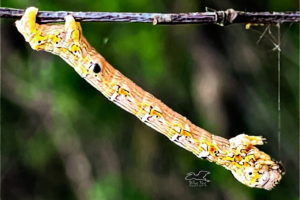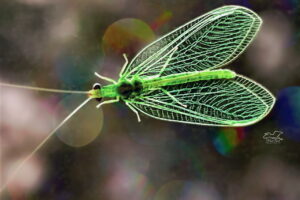The Luna Moth Caterpillar is Beautiful and Stunning

One of our biggest and arguably prettiest large moths in eastern North America is the Luna moth (Actias luna), also known as the American moon moth. The moth itself has a three to four inch wing span with very pretty green wings and long flowing tails off of the hind wings. I have seen Luna moths several times, although always at night in poor light, so I’ve never gotten any decent photos, but I don’t think I’ve ever seen one of their caterpillars before. In fact, I’m very sure I’ve never seen one before since I can’t imagine having forgotten about a huge, fluorescent green caterpillar! I was very startled when I saw this one as I was driving through our neighborhood. It was cruising along on the top board of my neighbor’s creosote treated fence board, so it was very easily visible. I screeched to a stop to jump out and take some photos. My two dogs probably thought I was nuts! It turned out to be a pretty decent subject since just as I pulled up, it stopped crawling for a few minutes, and then resumed, but at a pretty leisurely pace that let me easily keep it in focus.

These brightly colored caterpillars are the state that Luna moths stay in for the majority of their lives. The caterpillars go through five instars or growth stages before pupating and becoming an adult moth. At each instar the caterpillar gets larger, usually topping out at three to four inches long. This caterpillar was a fourth instar and probably measured about two to two and a half inches long. The caterpillars feed on the leaves of a variety of deciduous trees including white birch, hickories, sumacs, and sweet gum trees. Fortunately, as they get larger, they tend to disperse further and further, so they rarely do serious damage to the trees.

After pupating, the adult moth only lives for 7-10 days and does not eat at all. In fact, they don’t even have mouths to eat with! Instead, all of their energy is focused entirely on reproduction. Females secrete a pheromone that helps to attract males, often from quite a distance away. Mating usually occurs late at night and then the female lays her eggs on the undersides of host tree leaves the following night. These guys are definitely some beautiful creatures, both in the adult stage and as larvae and they certainly have an interesting life cycle.





Recent Comments